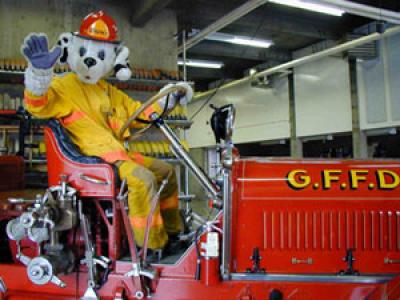Frequently Asked Questions
How can I get a Fire Rescue patch?
Patches are $5.00 each and you can get one by coming to the main office at Station 1 which is located at 105 9th Street South, any time during normal business hours Monday thru Friday 8am - 5pm. To order by mail, send a check or money order made out to Great Falls Fire Rescue and mail to PO Box 5021, Great Falls, MT 59403. Shipping restricted to United States only.
How can I get an Incident report?
Please call our office (406) 727-8070 so we can assist you with this. We ask that you have the date and address of the Incident ready when you make the request. You will also need to complete the Document Release Form, provide photo ID and submit the appropriate fee. Please be advised that reports may not be available immediately after the incident.
Medical Incidents are protected records and can only be obtained by Court Order or by the specific patient named in the report.
Will Great Falls Fire Rescue service my fire extinguishers?
The Great Falls Fire Rescue does not service fire extinguishers for the public. We only maintain our own extinguishers. If your fire extinguisher is in need of servicing, check the yellow pages of your phone book or search the internet for Fire Extinguishers or Fire Protection Equipment.
Do you conduct tours of your stations?
Tours of our 4 fire stations are available by appointment. Please call us (406) 727-8070 to schedule a tour for your group.
Do you have to respond with lights and sirens?/Do you have to send a big fire truck?
Firefighters respond in the fire trucks from the location and activities they are currently engaged in. This ensures the quickest response possible. The lights and sirens are used until the status of the emergency call is determined and/or confirmed.
Why do both the fire department and ambulance service respond to medical emergency calls?
- During a medical emergency a quick response and rapid medical intervention is critically important in achieving a positive medical outcome for injured or ill patients. Fire stations strategically located in the city generally enable medically trained firefighters to arrive more quickly to emergencies than ambulances.
- Many times patients will need to be extricated or disentangled as a result of a fall or an automobile accident before medical treatment and transportation can occur. Firefighters are trained and equipped to address these often challenging situations.
- During certain types of medical emergencies it takes staff from both response agencies to effectively and efficiently treat patients. According to the American Heart Association “… In those [EMS] systems that have attained survival rates higher than 20 percent for patient with ventricular fibrillation, response teams include, as a minimum, two ALS providers and two BLS providers.”
- Nearly half of all emergency medical responses don’t require ambulance transport. Because the fire department generally arrives quicker at medical calls, firefighters are able to determine whether or not ambulance transport is requested or necessary. If not, this information is passed along to the ambulance while they’re en-route and enables them to stay in-service for the next medical call. This helps the ambulance company operate with fewer ambulances and in turn helps keep their costs lower.

